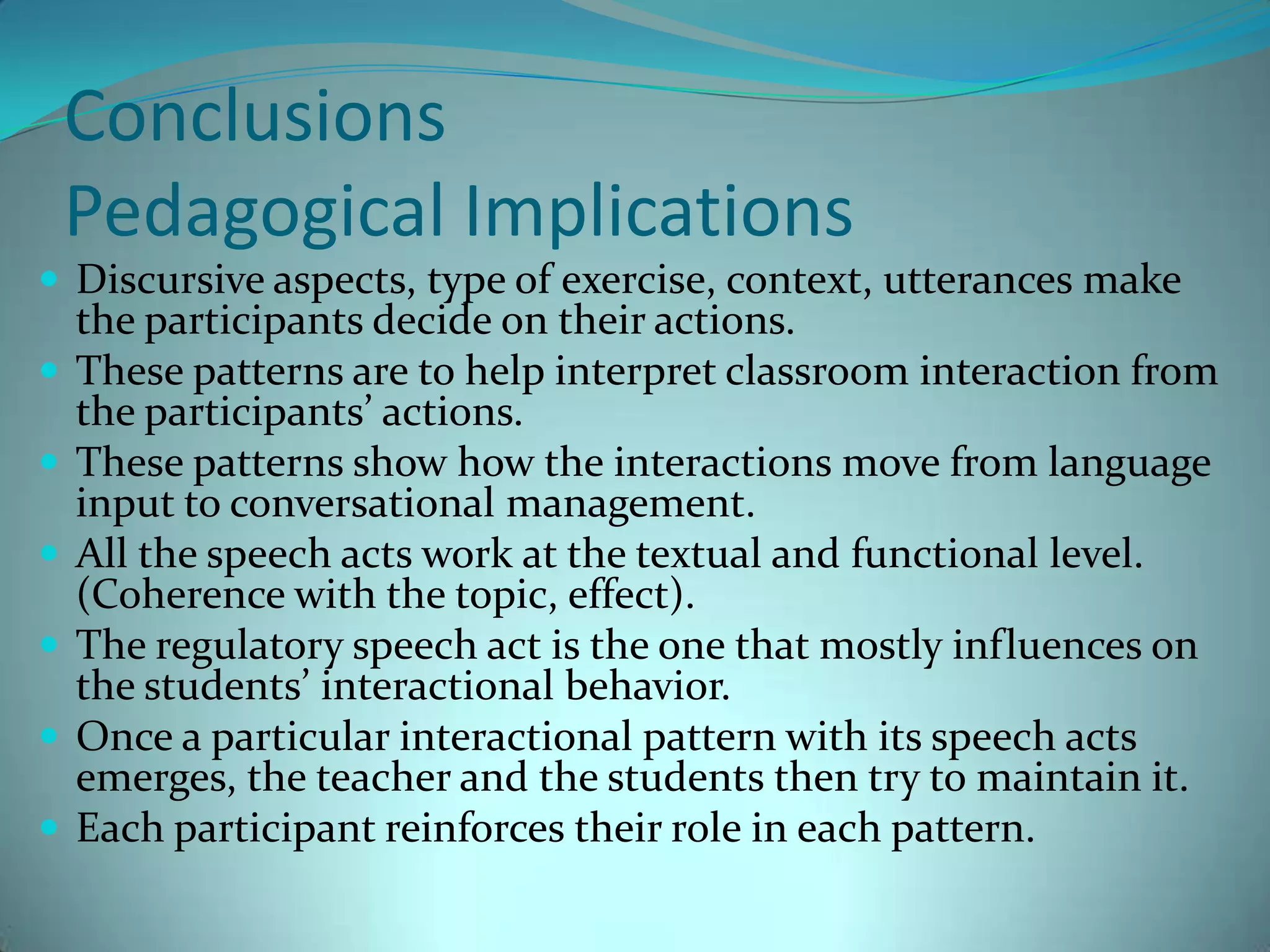This thesis explores the types of speech acts that occur in EFL classroom interactions between a teacher and pre-intermediate students. It investigates how these speech acts are constructed and maintained during conversations and their potential impact on the interactional behavior of both parties. The research employs an ethnomethodological conversation analysis methodology, focusing on the functions and effects of utterances to enhance understanding of classroom dynamics.
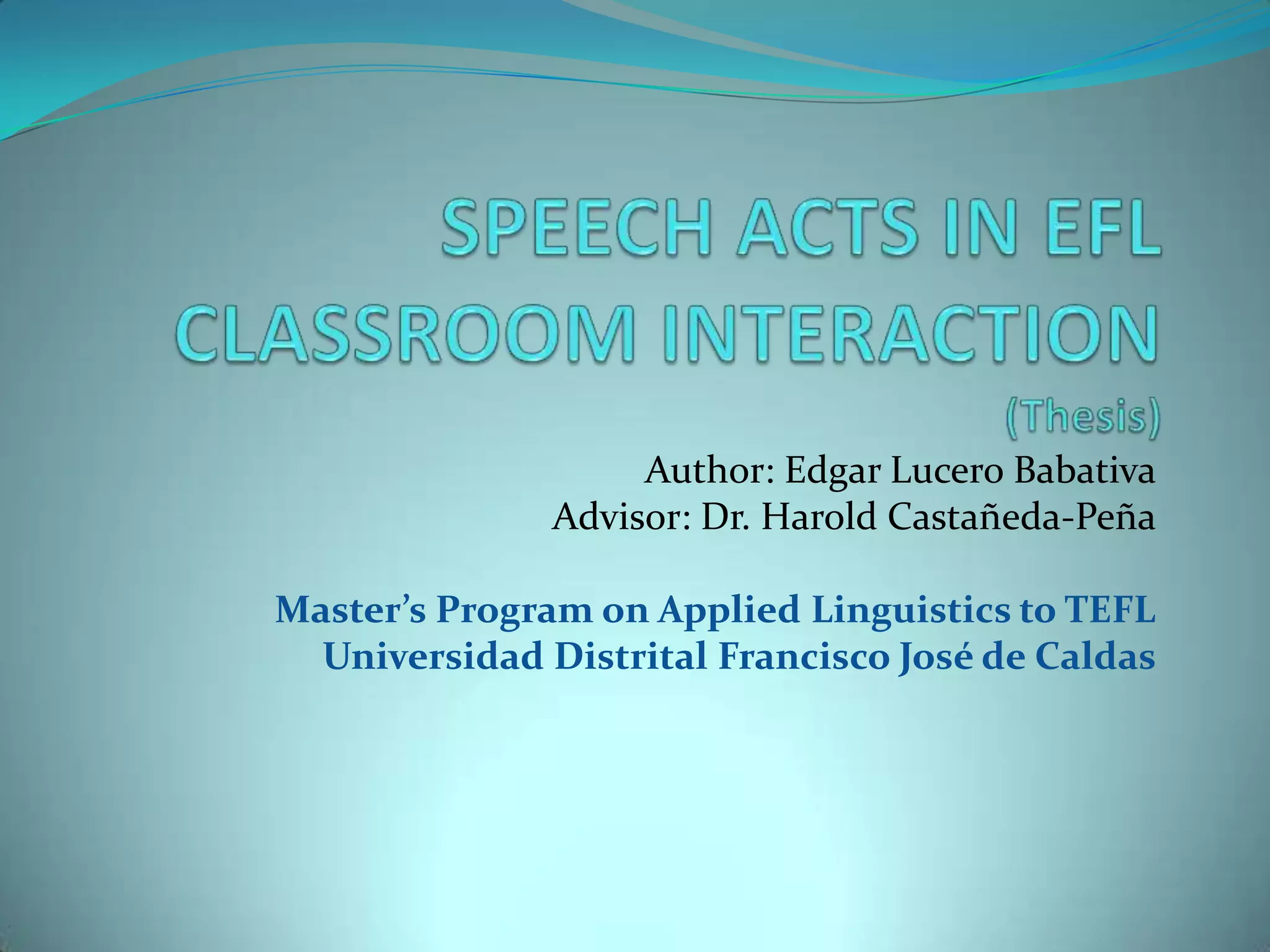
![Statement of the problem1. Conversation developmentInitiating01 Teacher: How often do you go to the church?02 Elsy: Church? I don’t go to the church… because I don’t believe in… in… [[she makes some gestures]]03 Teacher:Images?04 Elsy: No… in curas!05 Teacher:Priests!06 Elsy: But sometimes I go to the church but eh… sin la misa. I like to go to pray.07 Teacher:Yes. That’s exactly what happens to me. I don’t go to the mass, la misa, because it sounds very repetitive to me.2. Request3. RequestManaging4. Self-select5. Recognizeclosing](https://image.slidesharecdn.com/presentation-defense-111006083810-phpapp02/75/Presentation-Speech-Acts-in-EFL-Classroom-Interaction-2-2048.jpg)
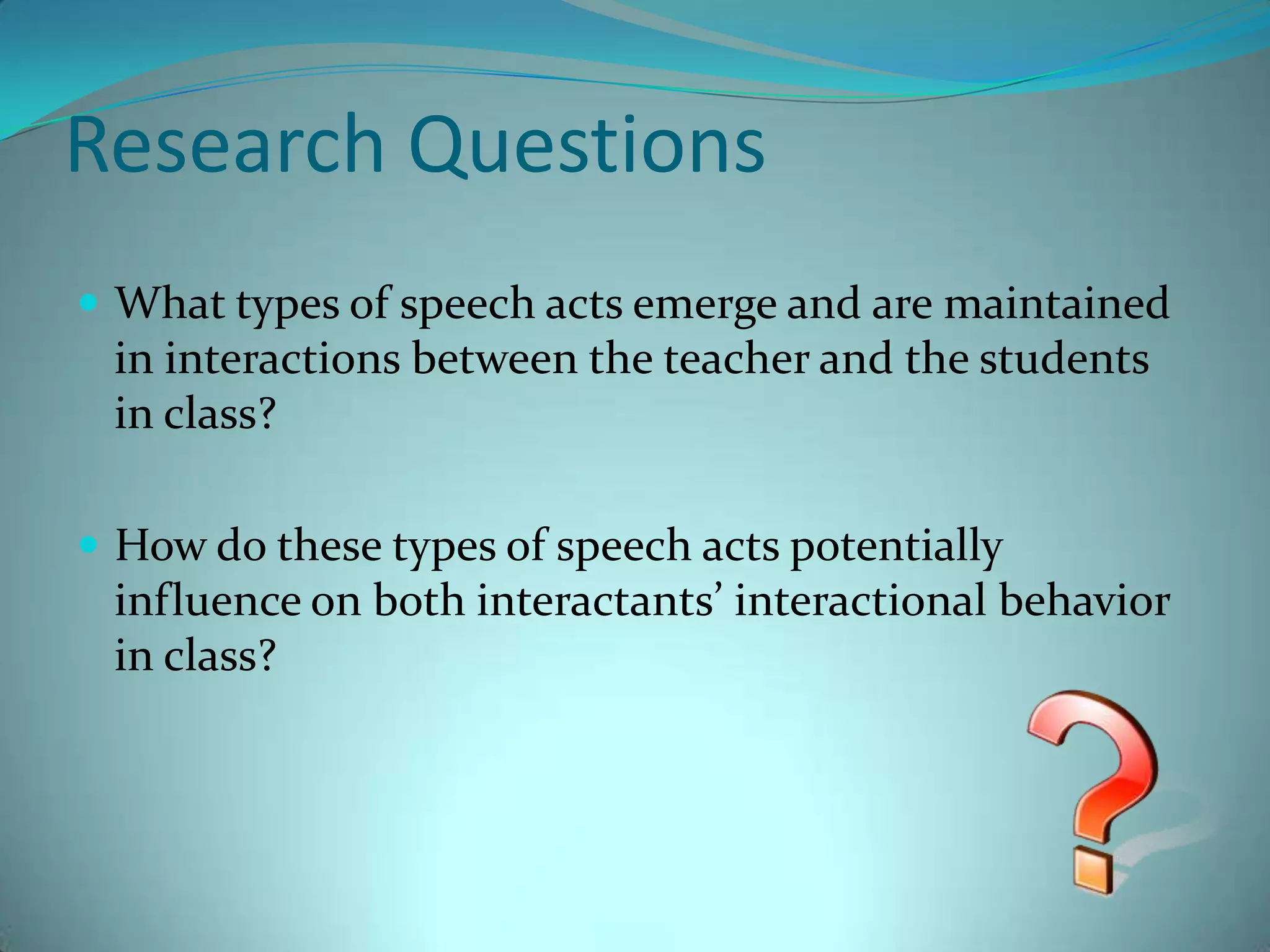

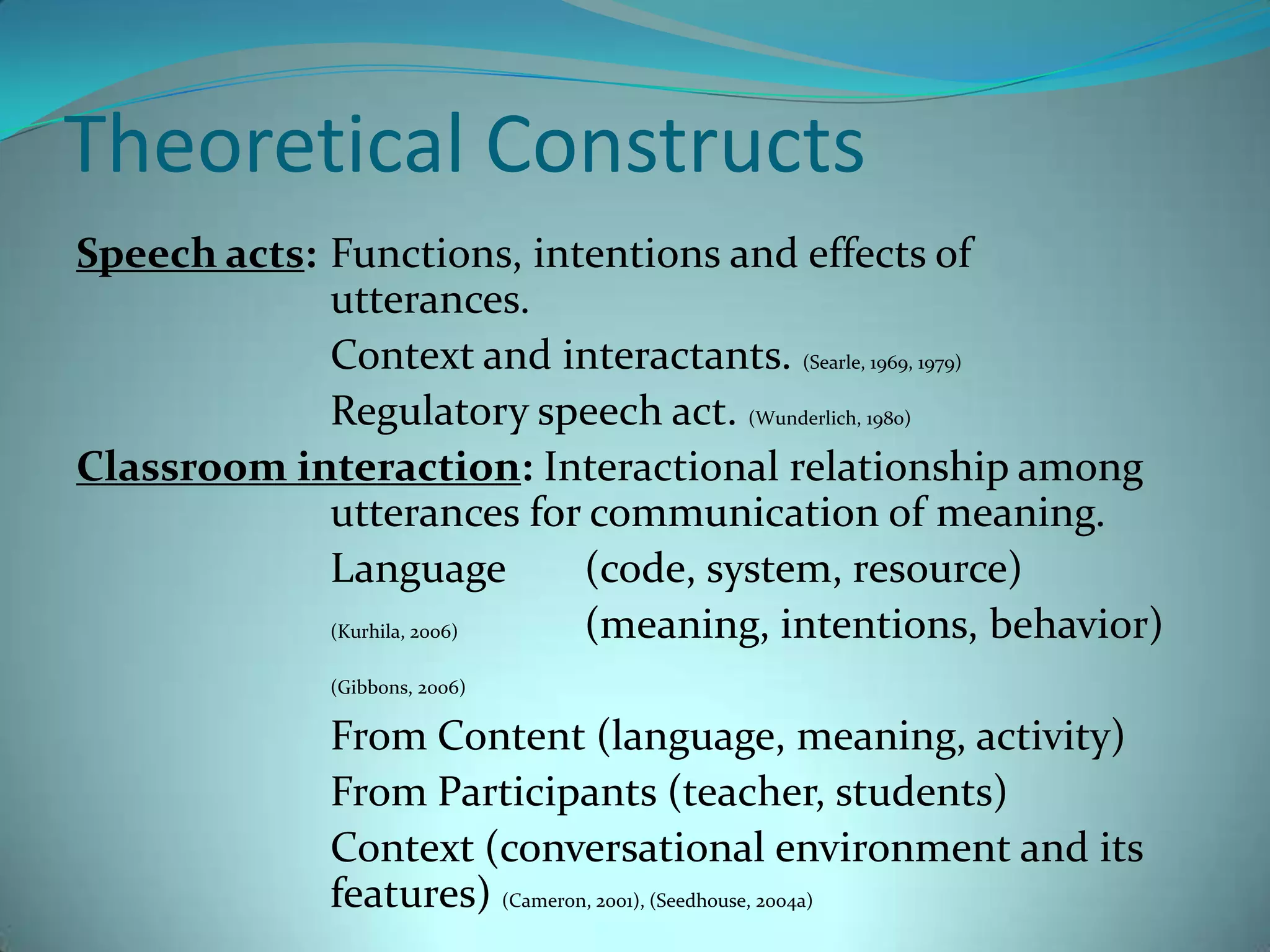
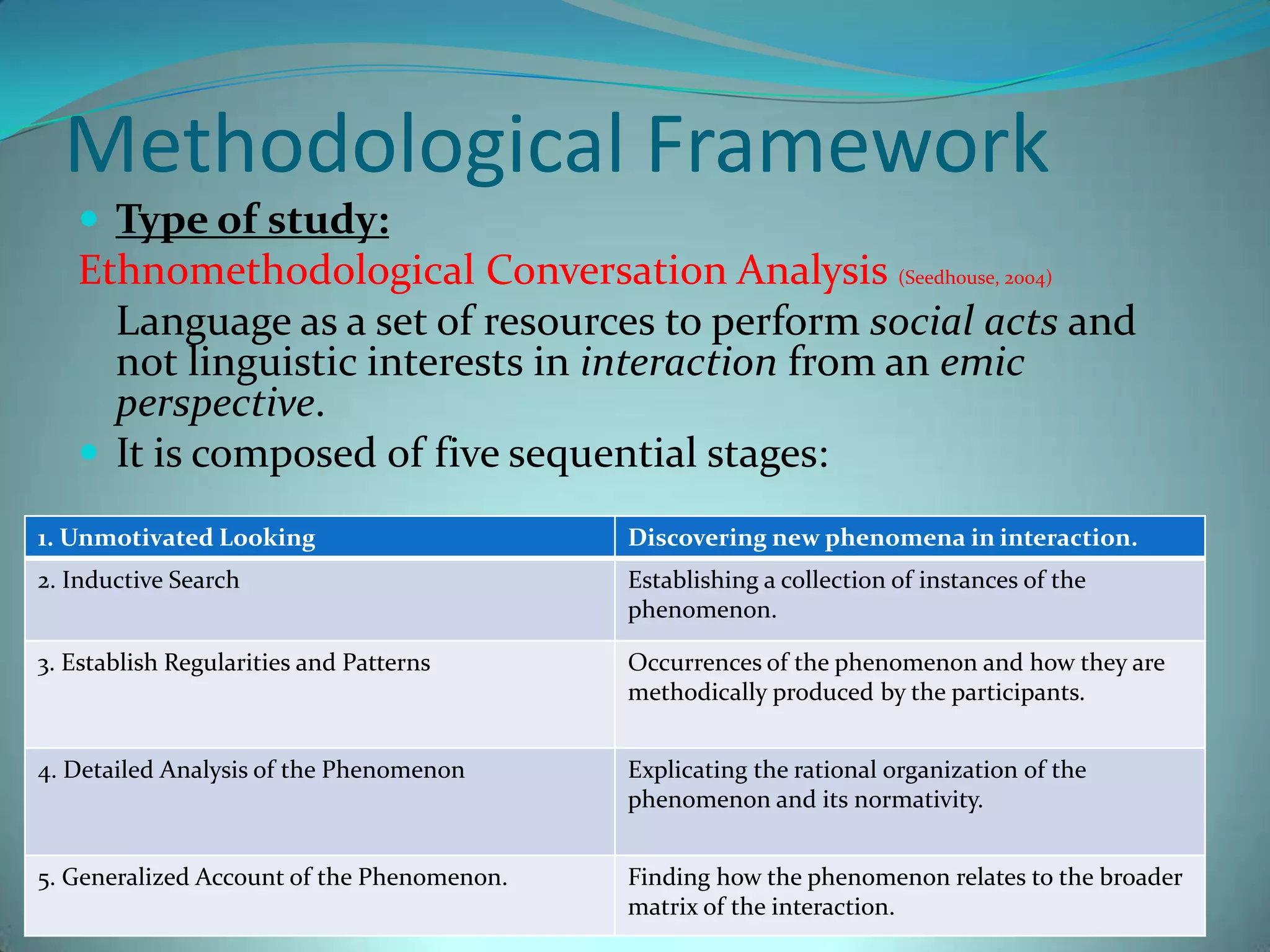
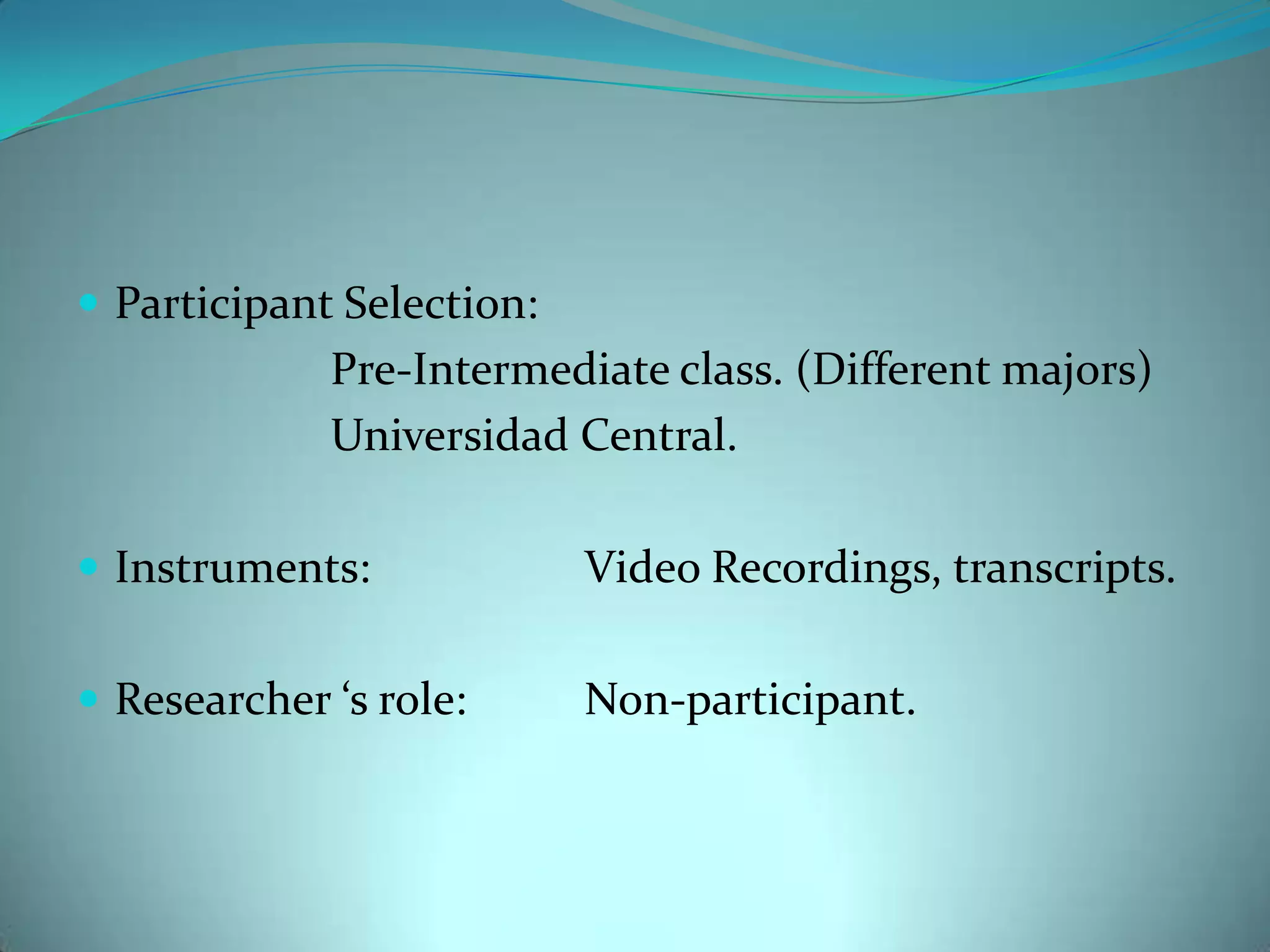
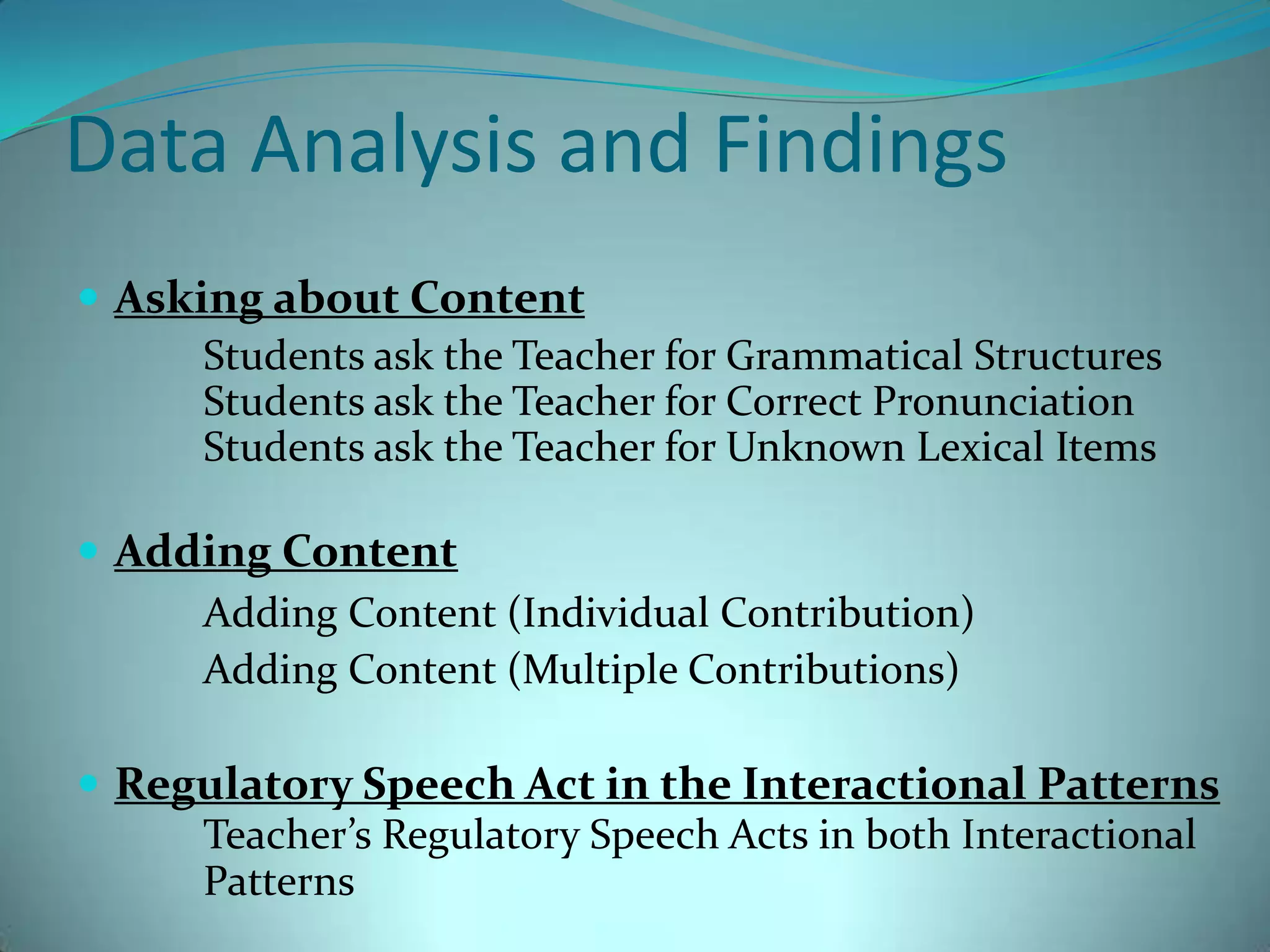
![Asking about ContentExcerpt 1.3. Teacher how you say…[[The teacher is assessing the students’ pronunciation from the reading of the text]]01 S1: MTV was [launched] on august one nineteen ninety one eh…a [video] called [triler] the radio star shown first MTV was not very [popular] in the [beginin] 02 T: STOP. Called, beginning. Called and beginning. Don’t make the mistakes. Ooohhh…03 S2: Teacher, how you say [[student points out in her notebook]] [a] [e]?04 T: Which one? [[the teacher looks where the student is pointing]] A video [e] video. OK Maria (8 sec.) no problem. In some parts of the United States people say [ei] in others they say [a] a video. George begin.05 S2: =ahh [[the student nods]][[The teacher continues assessing the students’ pronunciation from the reading of the text]]123](https://image.slidesharecdn.com/presentation-defense-111006083810-phpapp02/75/Presentation-Speech-Acts-in-EFL-Classroom-Interaction-9-2048.jpg)
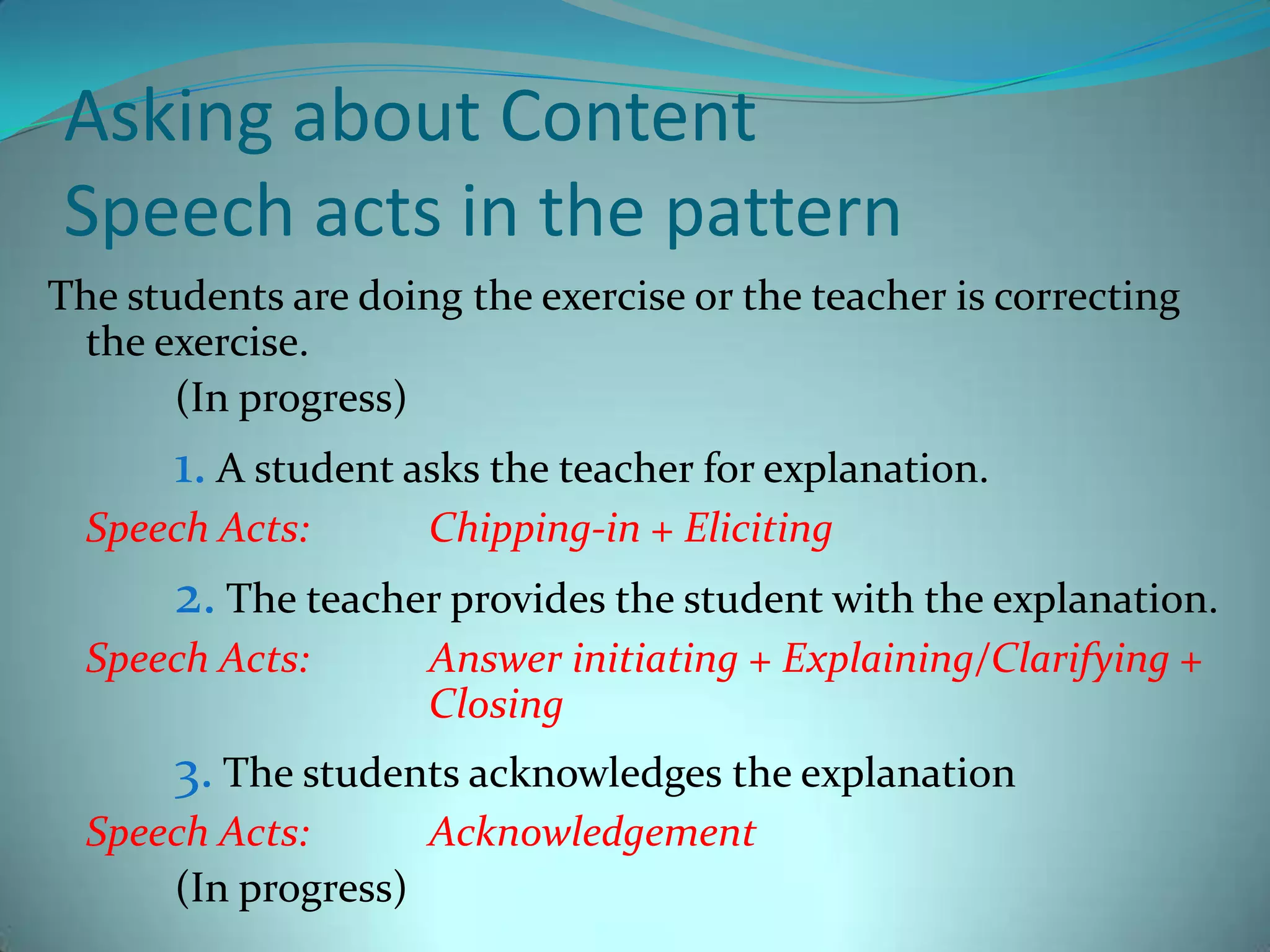
![Asking about ContentPotential Influence of the speech actsWhat content the student needs to ask the teacher about when the student takes up the turn.The level of difficulty the student can experience to construct the question.What content the teacher uses to answer it. Closing.03 S2: Teacher, how you say [[student points out in her notebook]] [a] [e]?04 T: Which one? [[the teacher looks where the student is pointing]] A video [e] video. OK Maria (8 sec.) no problem. In some parts of the United States people say [ei] in others they say [a] a video. George begin.05 S2: =ahh [[the student nods]]](https://image.slidesharecdn.com/presentation-defense-111006083810-phpapp02/75/Presentation-Speech-Acts-in-EFL-Classroom-Interaction-11-2048.jpg)
![Adding ContentExcerpt 2.1. Colombia has no winter.[[The teacher is explaining the item in the activity]]01 T: ok for example in January we have winter time.02 S1: because in Colombia we no have winter station.03 T: ok yeah in Colombia we don’t have winter, yes it’s true, so here we have summer all:: year long. Ok so let’s listen to the same part [[the teacher plays the part of the video on again]] so please listen, listen.[[The teacher goes on with the activity]]123](https://image.slidesharecdn.com/presentation-defense-111006083810-phpapp02/75/Presentation-Speech-Acts-in-EFL-Classroom-Interaction-12-2048.jpg)
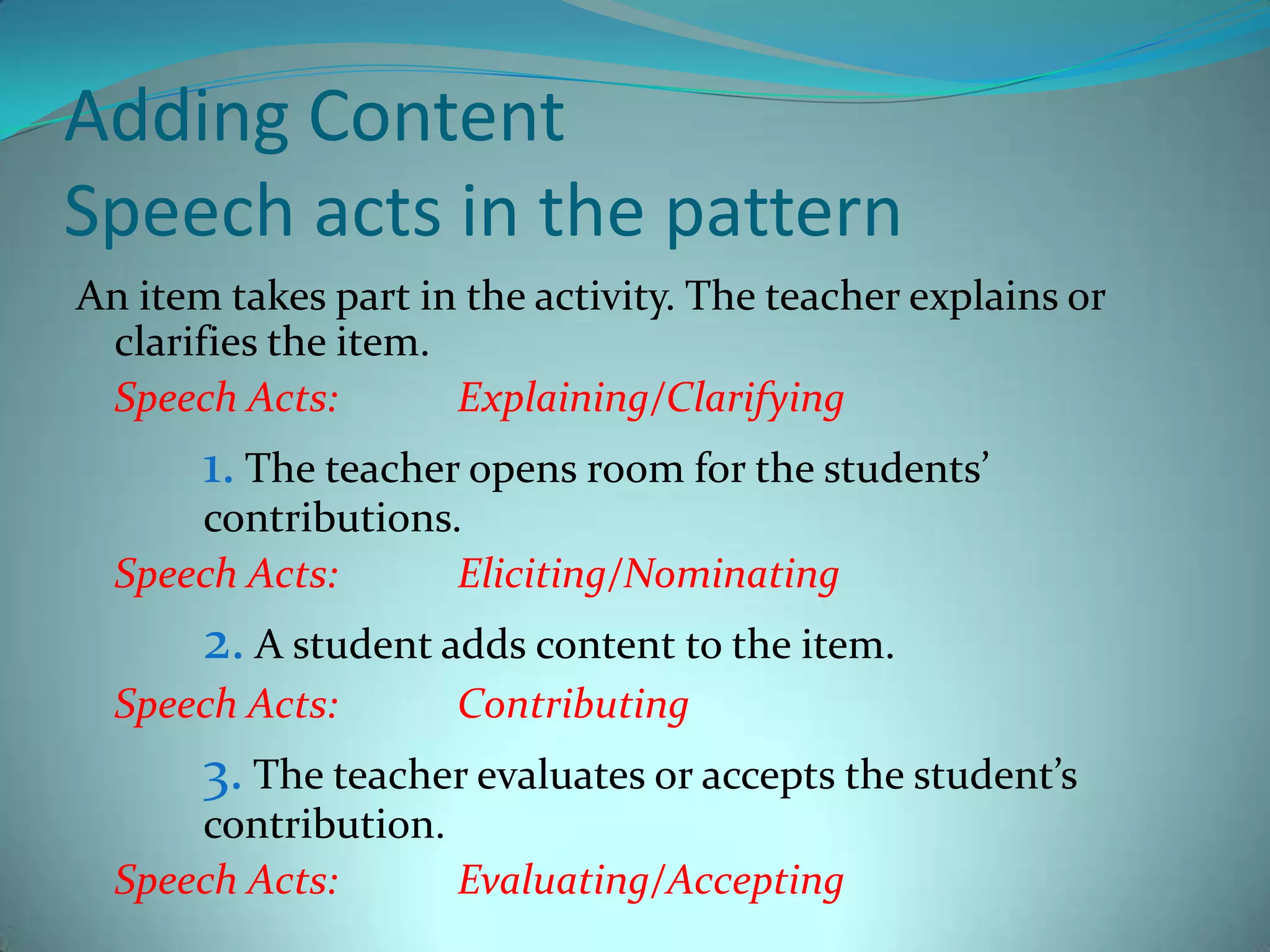
![Adding ContentPotential Influence of the speech actsThe teacher is the participant who provides the language context and then asks for the students adds.The students contribute with their opinions, experiences, or viewpoints about the item.The teacher evaluates or accepts the contribution.01 T: ok for example in January we have winter time.02 S1: because in Colombia we no have winter station.03 T: ok yeah in Colombia we don’t have winter, yes it’s true, so here we have summer all:: year long. Ok so let’s listen to the same part [[the teacher plays the part of the video on again]] so please listen, listen.](https://image.slidesharecdn.com/presentation-defense-111006083810-phpapp02/75/Presentation-Speech-Acts-in-EFL-Classroom-Interaction-14-2048.jpg)
![Regulatory speech act in the patternsThe student does not add a detailed amount of content to the item in reference in a speak-out exercise. The student does not use the target language for his/her contribution in a speak-out exercise or for his/her question in a linguistic exercise. Excerpt 3.4. Hago que no me doy cuenta.[[The teacher is accepting a student’s contribution to the item in the activity]]01 T: ok who doesn’t say anything and pay forty thousand pesos? who doesn’t say anything and pay forty thousand pesos? [[T raises the hand]] (4 sec.) [[Student1 raises her hand]] aha Sarah [[some SS laugh]] 02 S1: perodepende el servicio03 T: aha how do you say that in English?04 S1: depends the service05 T: Ok. But Sarah, you pay forty thousand?06 S1: [[S2 nods]] 07 T: Yes? Ok. Regulatory Speech Act](https://image.slidesharecdn.com/presentation-defense-111006083810-phpapp02/75/Presentation-Speech-Acts-in-EFL-Classroom-Interaction-15-2048.jpg)
